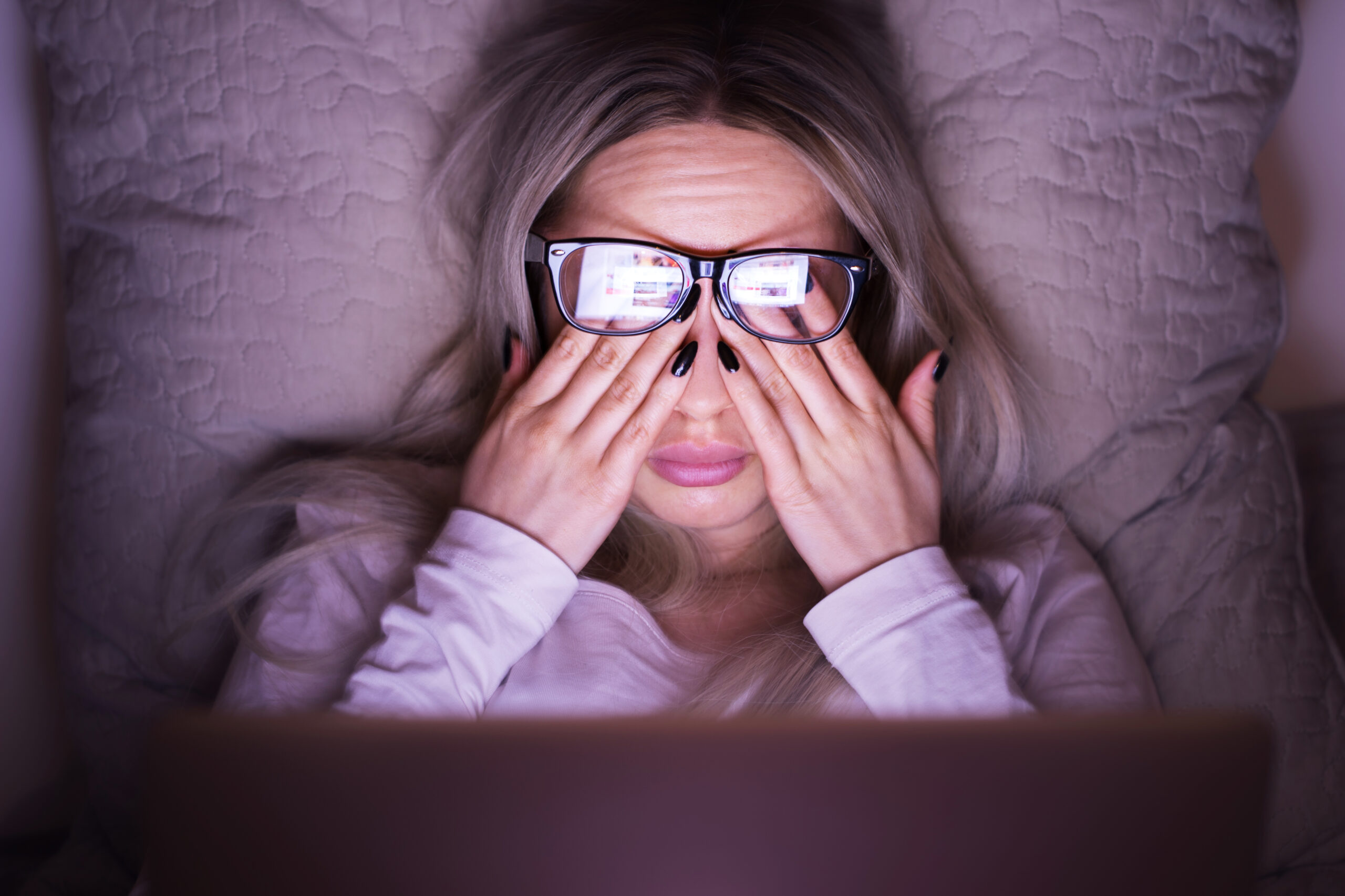With the COVID-19 pandemic, our connection to our devices has become stronger than ever. This is apparent whether you look at the high usage of online conference meetings, social media, or entertainment. With these conveniences of modern living comes danger in the form of digital eye strain. Digital-related eye strain can show itself with various symptoms, but the most prevalent are dryness, blurriness, light sensitivity, itchiness, and, even, stinging. These symptoms can worsen with time and frequent continued screen exposure. However, the American Academy of Ophthalmology (AAO) notes that though consistent screen usage can cause discomforting effects, it won’t cause permanent eye damage. Nevertheless, in order to improve your daily quality of life, there are a few tips you can use!
Looking at a screen for a long period of time can lead to eye discomfort and dryness.
Image Source: gawrav
1. Assistance from Products
A great product for those with symptoms of digital-related eye strain are artificial tears, which can allow you to avoid the discomfort caused by dry eyes. They also help to prevent itchiness and redness that could result from continued dryness.
A matte screen cover is also a great product to add to your phones, computers, and tablet. These help reduce glare from devices and can make using your devices in bright outdoor areas much more comfortable.
Computer glasses are specific prescription glasses that make your eyes strain less when focusing on a computer screen. This helps to avoid squinting to see details on a screen.
2. Create Healthy Personal Habits
Thoroughly clean your contact lenses. Dirty contacts can not only cause eye infections like conjunctivitis but also cause discomfort exacerbated by extended screen time.
Place your screen two feet away from you. According to the AAO, this ideal distance allows you to see the screen comfortably while also protecting your eyes from straining against brightness.
The “20/20/20 rule” states that every 20 minutes, your eyes should focus on an object 20 feet away for at least 20 seconds. If your eyes are locked on a screen for a large amount of time, you may notice an onset of pain, dryness, or other symptoms associated with eye strain.
3. Make Changes to Your Environment
Adjusting the lighting of your device to that of the surrounding environment can help prevent your eyes from straining to see an overly dim or bright screen. Many computers today have automatic sensors that automatically adjust brightness, ambiance, lighting tone, and more! Enabling this function is a seamless way to adapt your environment to be healthier for your eyes.
The air in your environment can also have an impact: if your eyes are constantly exposed to dry air, it can lead to a faster onset of dryness. Setting up a humidifier indoors or sheltering against winds when outside is a great way to protect your eyes when using a device.
Be sure to use some of these helpful tips next time you’re using an electronic device; you can even use them while you’re reading this article!
Featured Image: © DimaBerlin/ Adobe Stock










